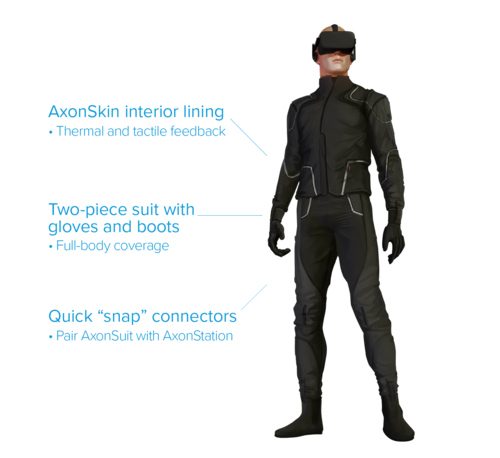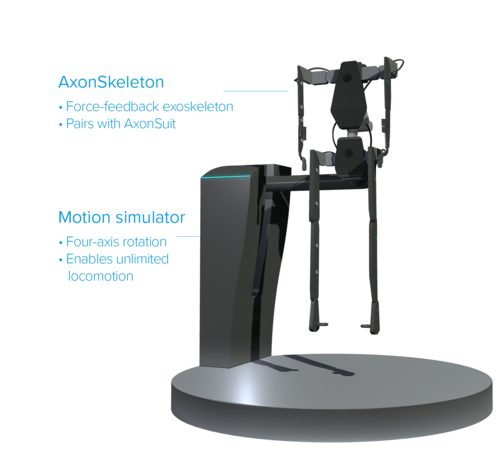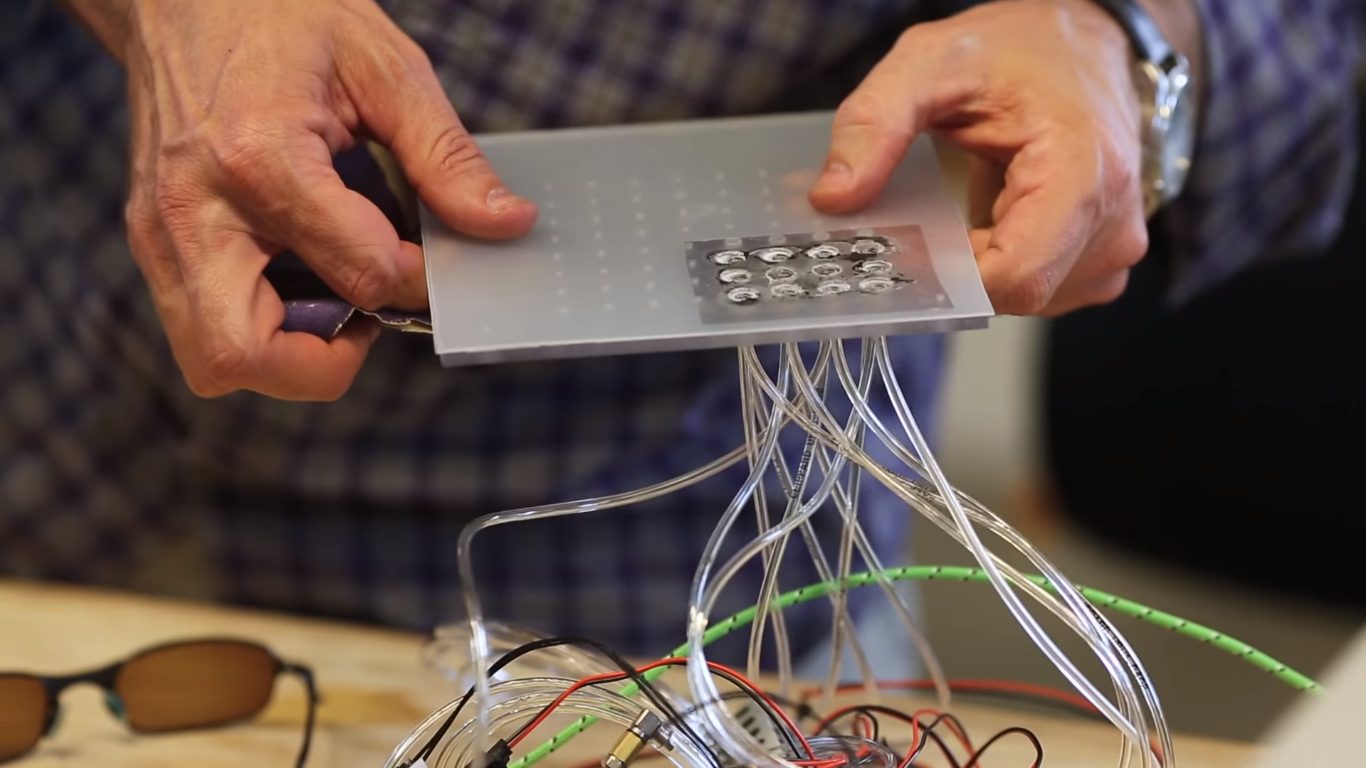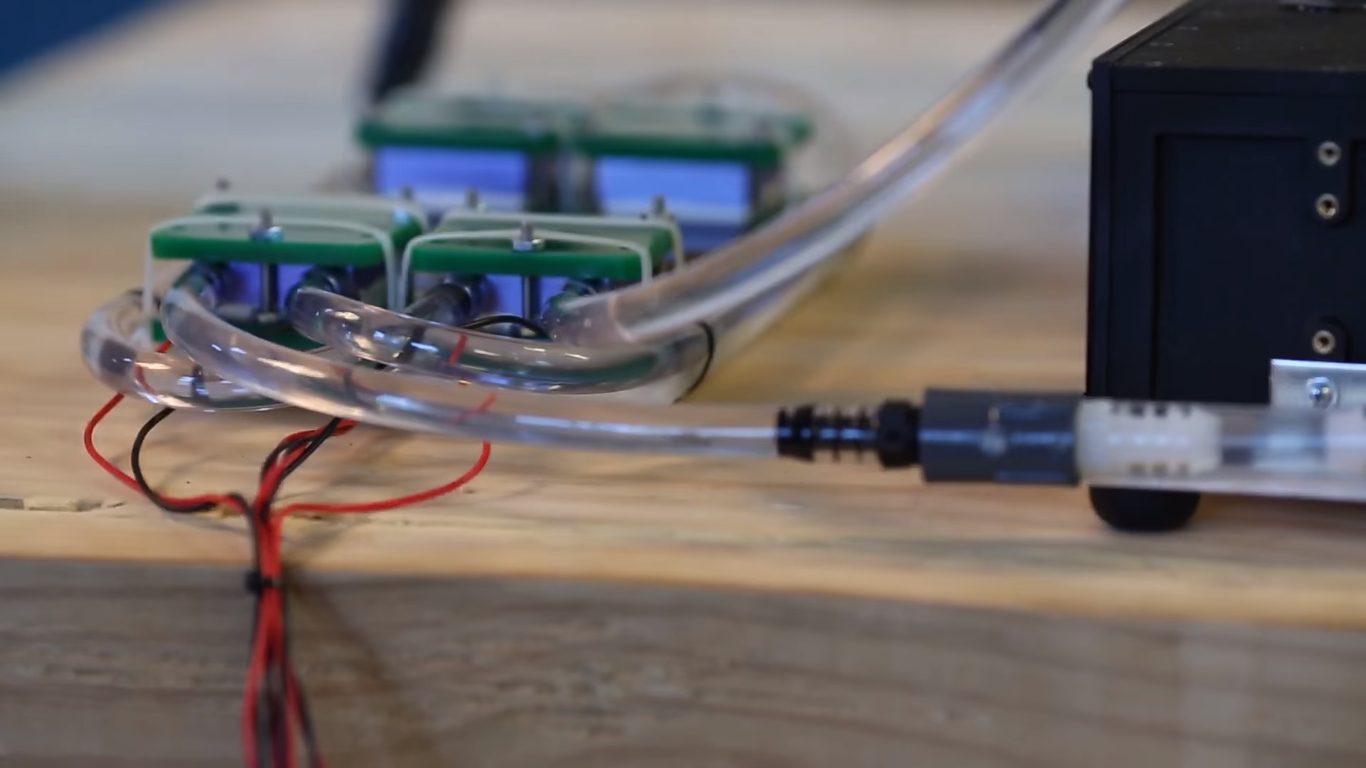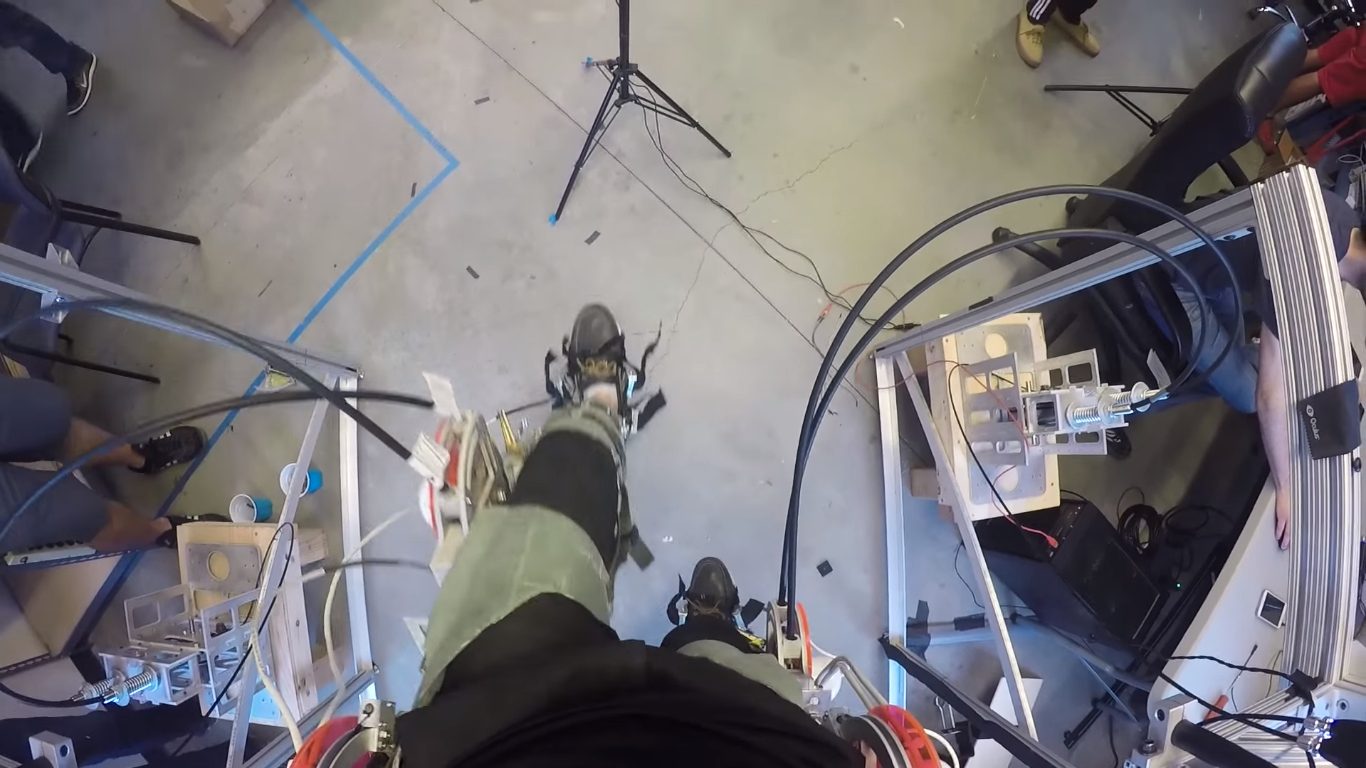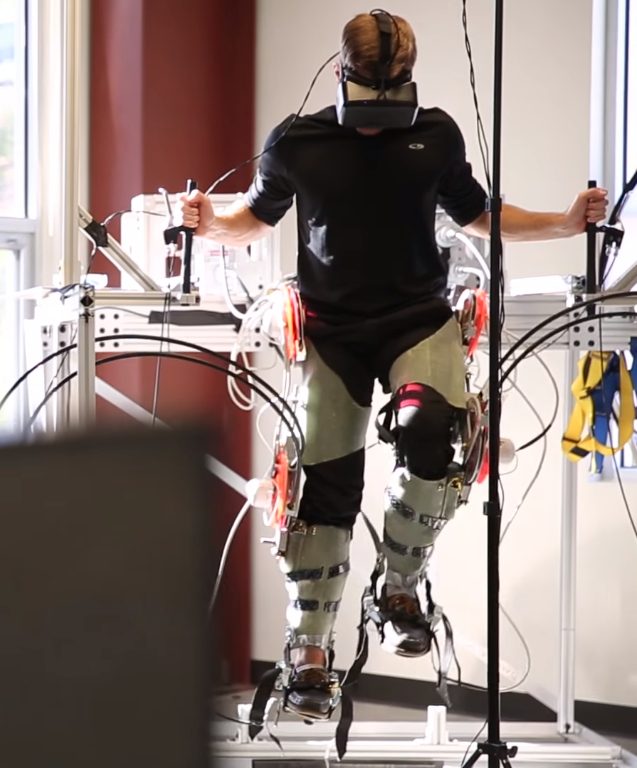AxonVR, a Seattle-based startup fresh out of a 4 year stint in stealth mode, recently revealed a piece of hardware that seems to have been lifted directly from science fiction. Promising a full-body haptic suit and an exoskeleton walking platform, AxonVR is the first company to tease an all-in-one solution that aims to deliver simulated pressure, hot and cold sensations, and the ability walk freely through the virtual world. But is it feasible? Sure, but maybe not as soon as you think.
AxonVR proudly claims that their haptic/locomotion platform will let you “scale the limestone pyramids of Giza. Make snow angels on the ice planet Hoth. Tee off like a green jacket master,” but you can leave your credit cards safely in your wallets for now, because while the renders show a finely-stitched haptic suit and sleek exoskeleton platform, AxonVR is still very much in the ‘bare wires and actuators’ R&D phase.
Dubbed ‘AxonSuit’, the company aims to deliver a full-body haptic suit using a sort of smart textile that marries pneumatic actuators and a reactive thermal layer. And if that was their only game, they’d really have their work cut out for them—as the prospect of fashioning an entire suit on the technology shown in the video and developing a robust exoskeleton platform would be considered nothing short of revolutionary for the VR industry.
Early haptic prototypes seen in the teaser are still bulky and inflexible, with the tactile layer requiring compressed air to simulate touch delivered through individual plastic tubes—and the separate thermal layer, which functions like a water-cooling rig for your computer by pumping heated and cooled water to a conductive, flexible heat sink, being equally as unwieldy. These are however prototypes to display the core technology, but shrinking and scaling it to cover the entire surface area of full-body suit—including a jacket, pants, gloves and boots while remaining flexible, light and breathable—will be a clear triumph in haptic technology.
The second part of the Axon platform is a piece of kit called the ‘AxonStation’, an exoskeleton designed to give force feedback and simulate free locomotion. We haven’t had a chance to try out a prototype yet, but a clear concern for any locomotion device such as an omnidirectional treadmill (or any consumer fitness machine for that matter), is the device’s inherent robustness. More moving parts usually means more points of failure, and when you’re relying on an actuator to stop your foot while you’re supposed to be climbing the millionth stair, or making a parkour jump to the next platform, you need something that will support your weight time and time again, and with little to no chance of breaking.
AxonVR’s digital marketing manager Andrew Mitrak disclosed on Reddit that the whole system is both “very cool and very expensive,” and jokingly admitted that if anyone “want[s] to send us $4999, our address is available on our website.” Mitrak later circled back to make it very clear that this statement was made purely in jest and that $4999 was in no way indicative of final retail pricing.
The startup isn’t asking for money though, at least not from you via any form of crowdsourcing campaign. According to Geekwire, AxonVR raised $1.2 million “from friends and family, and it is currently oversubscribed in an ongoing $3 million seed round.” The company has since brought on board ex-Microsoft executives Mark Kroese and Joe Michaels to fill the roles of President and Chief Revenue Officer respectively.
While any good skeptic will tell you that extraordinary claims require extraordinary evidence, consumers (us included) badly want to believe that the company’s core technologies are scalable enough to fit an entire suit—and that evidence has yet to arrive.

